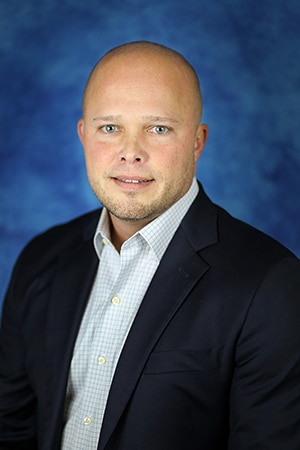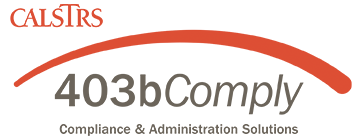Written By: John Fowler, CFP®
You won’t believe it…
It’s a beautiful Wednesday afternoon and I’m driving down the highway towards Dallas. I’m listening to music in the car and rolling down the highway. You know how it is, that certain song comes on and you can’t help but sing along. Suddenly you’re caught in the moment. Then BOOM…it happens.
One thing Dallas has become notorious for, the dreaded highway pothole. There I am traveling 70 miles per hour down 1-21 when I hit a construction pothole so large it cracks the front and back rim on the driver’s side and destroys both tires. The force also causes me to hit my elbow on the inside door trim so hard I actually crack it; the trim, not my elbow. Between replacing the rims, the tires, fixing the inside paneling, and the minor bodywork the total repair bill is $4500. Thankfully, we have pretty decent auto insurance so, while mildly irritating, I know our insurance would cover the vast majority of the bill. Unfortunately, I haven’t given much thought to what our deductible would be. Then I get the news. Our deductible is $1,000. While $1,000 is still better than having to pay the full $4,500, doing so was still a bit painful.
Fast forward one week. I’ve got the car in the shop when our 10-year-old refrigerator kicks the bucket. I remember thinking to myself, “Self, this is ridiculous…what else could go wrong?” I should’ve never uttered those words. Fast forward another week; my wife walks out of our master bathroom asking me why there isn’t hot water. If you guessed it was because the hot water heater had died, you would be correct. In three short weeks, we had racked up $3,000 in deductibles and hardware replacement expenses.
Why am I telling you this long and detailed story? Bankrate.com performs a poll every year where they ask random participants how much they have in emergency savings. Unfortunately, around half of all Americans aren’t able to cover a $1,000 bill without having to borrow money (i.e. put it on the credit card or take a short-term loan) and nearly 40% have less than $400 in emergency savings. Now there is absolutely nothing special about me or the life I live yet I was able to rack up $3,000 in expenses in less than 21 days. If it can happen to me I have to imagine it can happen to anyone. Therefore, having an emergency fund is probably the single best thing you can do for your personal finances.
Start with an attainable goal.
Build up your first $1,000 in savings. That’s $100/mo. for 10 months or $50/mo. for 20 months. Once you hit that goal, congratulations! You are better off than roughly 50% of the US population. But you don’t have to stop there.
Set your next goal
Your next goal should be to set aside $3,000-$5,000 in cash. This will ensure if you have the type of summer I had, you won’t have to put it on the Visa. Speaking of credit cards…Experian, the credit rating agency, did some data crunching and found the average American has $6,194 in debt at an average interest rate of 16.88% or roughly $1,045 per year in interest charges. By simply having an established emergency fund you are already on the road to creating wealth.
Remember, saving money is a bit like running a race
It’s important for you to understand the time it takes each person to do this will vary based on income and debt load. Whether you are running a 5k, 10k, or a marathon everyone started the same way…with a single stride. In other words, they started by STARTING.
Take the next step
Once you have built up the $3,000-$5,000, the next step is to try and save several months’ worth of living expenses. Most financial advisors and financial planners lean on the following general rule of thumb. If you live in a double-income household then you should have 3 months of emergency savings on hand, and if you live in a single-income household, they recommend you are able to cover 6 months of expenses. I would argue, we now live in a brave new world, technology and automation are set to displace a great many of us for longer periods of time.
When the Tech Bubble burst in 2000-2002 and then again during the “Great Recession” (2007-2009), it wasn’t unheard of to be out of work for more than 6 months. In fact, many people had to change careers altogether which, in some cases, required multiple years of retraining. In the era of Covid and lockdowns, the issue of employment fragility has become even more acute. When confronted with a situation like this, you can’t discount what a little extra cash can do for you and your loved ones. This is where the budget comes in.
Find tools to help you track spending
If you don’t know what your expenditures are each month you won’t have a clue as to what you should save or could save. There are some good online budgeting tools that you can use or if you have access to our FinPath program through your employer, you can use the FinPath tools to help to create a budget and get access to coaches who can help you meet your savings objectives.
Work Smarter, not Harder
Use technology to make your money work harder for you. Many banks and brokerage firms will allow you to automatically move money from your checking account to your savings account each month as a way to help you save. This is an excellent way to start building your emergency fund. Essentially, your emergency savings turn into a bill you auto-draft from your checking account each and every month. As your assets continue to grow don’t be afraid to branch out and make use of providers outside of your current banking institution. Most people tend to use the big money center banks such as Bank of America, Chase, Citi, Wells Fargo, etc., or some type of local Credit Union. In our current interest rate environment, these large money center banks typically pay slightly above…well…nothing. Because of this, you may be better off looking for low-fee “online-only” savings accounts. At the time of this writing, you can earn 0.5% in an FDIC-insured savings account. If you are looking for a bit more yield, you can look at 30-90 day treasuries, backed by the full faith and credit of the US Government, and pick up roughly 0.75% in Annualized Percentage Yield (APY). If you need a little bit more bang for your buck there are ways to pick up between 1-4.5% and still have access to your cash within 72 hours (if you aren’t sure how to do this, reach out to your advisor).
Final Thoughts
The key here is to understand the importance of being able to cover relatively modest expenses without having to borrow (i.e. putting it on the credit card), so you can avoid paying massive interest charges. Never forget the old proverb, “The rich rule over the poor, and the debtor is a slave to the lender.” Establishing an emergency fund is the first step on your financial journey. While you may never FEEL rich, having the means to cover unexpected expenses without having to borrow money can help keep you from feeling poor. That level of financial readiness may very well be the foundation you need to move up to the next level of financial wellness.

John Fowler, CFP®
Senior Wealth Advisor
John specializes in Portfolio Management, Retirement Plan design and Implementation, as well as Financial Planning. John maintains the CERTIFIED FINANCIAL PLANNER™ designation and series 66 securities license. John has a Bachelor of Science degree in Electrical Engineering.


0 Comments